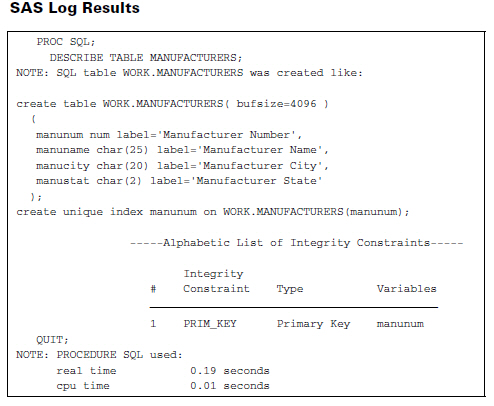Kirk Lafler and his book PROC SQL: Beyond the Basics Using SAS are the source of this week's tip. PROC SQL was the very first book that I promoted when joining SAS. Kirk was the perfect first SAS Press author to work with and he remains a favorite. And his book continues to appeal to users--whether they're online or at conferences.
You, too, can get to know Kirk and his work by visiting his author page. Be sure to read reviews of his book and the free chapter. You'll also find links to many of his SAS tips.
The following excerpt is from SAS Press author Kirk P. Lafler and his book "PROC SQL: Beyond the Basics Using SAS" Copyright © 2004, SAS Institute Inc., Cary, North Carolina, USA. ALL RIGHTS RESERVED. (please note that results may vary depending on your version of SAS software)
5.4.9 Displaying Integrity Constraints
Using the DESCRIBE TABLE statement, the SQL procedure displays integrity constraints along with the table description on the SAS log. The ability to capture this type of information assists with the documentation process by describing the names and types of integrity constraints as well as the contributing columns they reference.
SQL Code
PROC SQL; DESCRIBE TABLE MANUFACTURERS; QUIT;
The SAS log shows the SQL statements that were used to create the MANUFACTURERS table as well as an alphabetical list of integrity constraints that have been defined.





